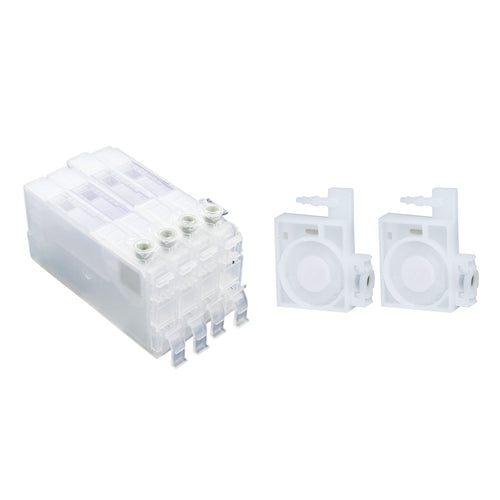Introduction
With the increasing speed of personalization, UV printing has also been an innovative process in printing. With its image of efficiency, environmental-friendliness, and versatility, it is being used widely in personalized gifts, industrial signage, and high-end packaging. This article explains how UV printing is performed, its main advantages, and practical applications to familiarize you with its advantages in a better manner.

1. What is UV Printing?
Definition of UV Printing
UV printing is an ultraviolet (UV) curing-based digital inkjet printing technology. Unlike other printing technologies, UV printing leverages highly developed UV inks that cure quickly in the presence of UV light to produce high-quality, durable images on a wide variety of mater

How UV Printing Works
The core process of UV printing includes:
Inkjet Printing: The UV printer jets UV ink onto the surface of materials by using high-precision printheads.
UV Light Curing: Ink is exposed all at once by UV lamps, which activates photoinitiators to cure the ink to a coating and bond strongly to the surface.
Final Output: It has no drying time, hence the printer output is ready to use instantly, greatly enhancing productivity

UV ink is less weather-sensitive and tackier than traditional solvent-based or water-based inks, having very good accuracy that is perfectly suited to printing on plastic, glass, metal, wood, leather, etc. This makes UV printing much in demand for commercial and industrial applications.
2. Core Advantages of UV Printing
① High durability and environmental protection
The UV ink forms a scratch-resistant, water-resistant, and light-resistant hard film on the surface and is applicable to outdoor billboards and industrial signboards. UV ink is also VOC (volatile organic compound) low, which reduces pollution to the environment and is a trend in our eco-friendly era.
② Direct Curing to Improve Productivity
The UV ink immediately dries when exposed to UV light, without any drying time required, and therefore significantly enhances productivity efficiency. This feature makes UV printing ideally suitable for high-speed customized manufacturing, for instance, phone cases, decorative panels, and customized packaging requiring rapid delivery.
③ Accurate Color Rendering & Gloss Level Control
UV printing has also enhanced color performance with high saturation and a large color gamut. Also, using different UV lamp powers or applying varnish, surface gloss can be controlled to create different effects like glossy, matte, or embossed surface finishes.
④ Compatibility with Various Materials for Broader Applications
UV printing is applicable for glass, ceramics, acrylic, wood, metal, plastic, leather, etc., without pre-coating treatment. UV printing has improved material compatibility with respect to conventional screen printing or heat transfer printing, and thus can be widely applied in home decoration, advertising signs, electronic product housing, cultural and creative products, etc.

3. Application Scenarios of UV Printing
① Individualized Customized Products
UV printing is widely applied for consumer product personalization such as phone cases, T-shirts, tote bags, and mugs. UV printing's high accuracy, scratch resistance, and water resistance make customized products more market-competitive

② Industrial Signage & Nameplates
UV printing is also applied to metal nameplate manufacturing, equipment labels, and car dashboards. For these uses, high resistance to fading for extended periods and high durability are needed, and therefore the UV-resistant character of UV ink is well matched.

③ Packaging & Labels
Some high-end brands employ UV printing to produce high-end packaging, wine labels, and beauty packaging. With the addition of a UV varnish or embossed print effect, the products have a more superior look, allowing for brand identification.

④ Building Materials & Home Décor
UV printing is also extensively employed in interior decoration and construction materials, such as glass doors, wooden panels, and ceramic tiles. It is able to impart personalized marble designs, 3D embossing finishes, and gradient finishes, giving interior designers greater design flexibility for interior decoration.

However, UV printing can only be done on flat planes, which restricts its application. The design also cannot be moved after being printed, and there has to be precise positioning with little margin for error. UV DTF printing circumvents these limitations with greater flexibility.
4. UV Printing vs. UV DTF Printing: How to Choose?
UV DTF (direct-to-film) printing is a variation of UV printing with the purpose of obtaining decal transfer on curved and irregular surfaces. It first prints the UV design onto A/B film, which is then transferred onto the target object.
Feature |
UV Printing |
UV DTF Printing |
Suitable Surfaces |
Flat materials (glass, wood, metal) |
Flat, curved, irregular surfaces (cups, spherical objects) |
Curing Method |
Direct curing on material |
Printed on film first, then transferred |
Durability |
Highly durable, ideal for long-term use |
Slightly less durable than UV printing, but more versatile |
Main Applications |
Industrial nameplates, packaging printing |
Custom products, crystal stickers, balls, glass bottles, ceramic mugs |
For a detailed comparison of UV printing and UV DTF printing, please refer to this guide .

5. InkSonic A3 UV DTF Printer VF13: Professional UV DTF Printer
If you find that UV DTF printing better suits your needs, I highly recommend our high-quality InkSonic A3 UV DTF Printer VF13 , a professional device worth considering.
Here are the reasons:
2-in-1 Printing + Lamination Function: Automatically laminates after printing for smoother and more durable results.
Epson DX7 High-Speed Printhead: Prints up to 8 square feet per hour with high precision.
Triple Printhead Protection System: Ensures stable ink output and prevents clogging.
Silent & Portable Design: Offices, studios, and most workspaces.
Easy-to-use Control Panel: Easy to operate, even for beginners.

Besides, we also include a complete starter kit with every purchase, including UV ink , varnish , and A/B film , so you can print immediately and recover your investment quickly.
Want to learn How to Make UV DTF Decals? Click here to explore.
6. Conclusion
UV printing offers fast, durable, and eco-friendly prints on diverse substrates suitable for industrial and specialty applications. For curved surfaces, UV DTF printing is more versatile.
Thanks to technologies like the InkSonic A3 UV DTF Printer, businesses are now able to increase efficiency and open up new opportunities. With growing demand, UV technology is driving innovation in printing.
For more questions about UV DTF printing, check out this guide .
- DTF print shops looking to expand capacity
- Apparel printing professionals wanting to reduce manual labor
- Startups seeking a cost-effective integrated solution
- Existing DTF users ready to upgrade their workflow

































